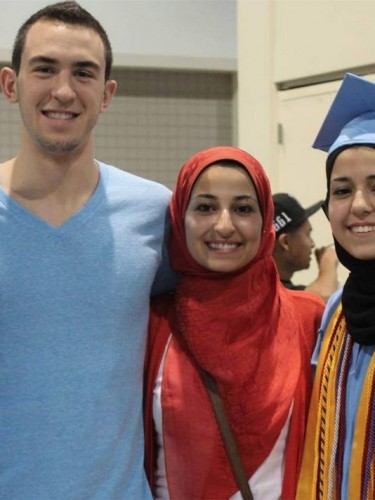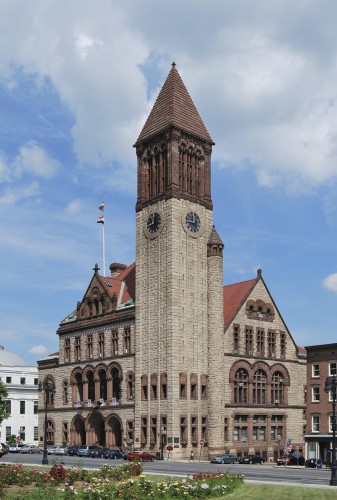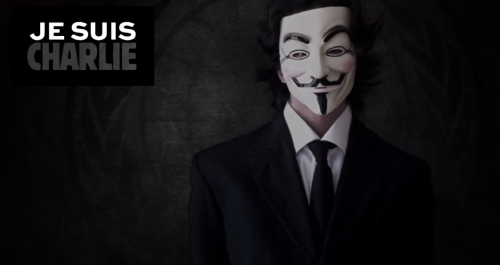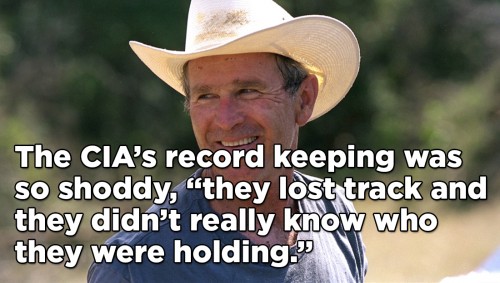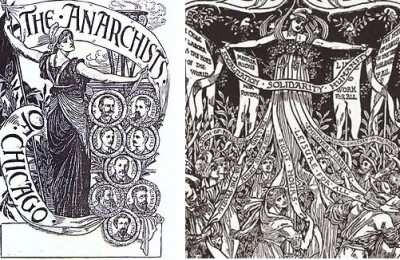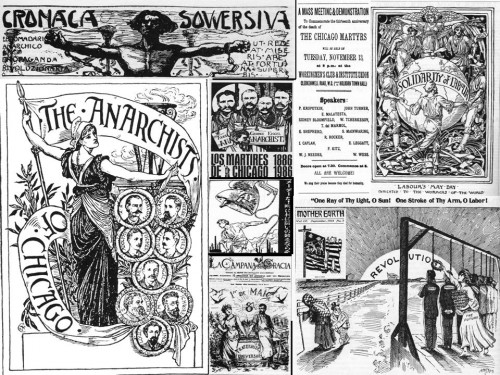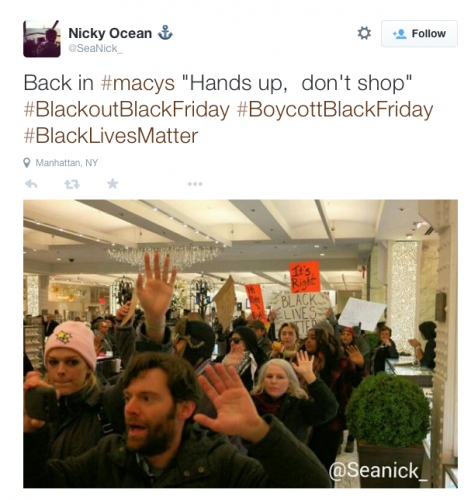
One of the most dangerous misconceptions about our present political climate is that it is broken. That too many “bad apples” have achieved high-ranking positions and it s their greed and malfeasance that is to blame for rising inequality and state-sanctioned violence. Overcrowded prisons, rapid gentrification, industrial disasters, and predatory banking practices aren’t bugs, they’re features of our current historical moment. Even if CEOs and presidents wanted to end any of these problems tomorrow, they could easily be sued or even jailed for threatening their bottom lines. And while we should never hold critics to the impossible standard of “come up with a better system” it never hurts, from time to time, to play Minecraft with words and come up with some replacements for the current way of doing things. What would a vastly better technological society look like?
First, some ground rules and disclosures: I’m coming at this as an anarchist, so while government and private property seem equally unsalvageable as means of progressive change, I’m willing to play with both as a means of lessing the suffering of others in the relative short term. What I’ll describe below are fairly radical reforms but ones that could easily happen within my life time, even within a single presidential administration if the government felt sufficiently threatened by its own people. My hope is that these reforms might remind people that guarded private property and militaristic governments are not the only things keeping the boogey men of terrorists and criminals at bay, but are in fact their sole creators. From these reforms enough people might be sufficiently convinced that we can trust one-another to govern without the constant threat of violence.
At present we ––and this is a pretty broad “we” encompassing all but the most isolated communities–– live in a world where necessary goods and services are highly policed because they are distributed so unevenly. Information isn’t the only resource that wants to be free, and it takes a considerable amount work to keep stuff from being distributed evenly. Its as if you wanted to take a lake and dam it up such that some parts of the lake are 20 feet higher than other parts. Maybe you even dredge the bottom of an entire bank so that it is kept artificially deeper than it would be otherwise. You’d need to build and maintain enormous and heavy walls to keep the water from getting back to a stable equilibrium. Despite all of the concerted efforts to make competition and domination seem like a natural condition, that is simply not the case. As Evelyn Fox Keller has demonstrated, scientists, through language conventions that are not backed up by observable evidence, “support the characterization of the biological individual as somehow “intrinsically” competitive, as if autonomy and competition were semantically equivalent”.
The imposition of inequality, through guarding and hoarding of necessary goods by a minority of elites, is the single greatest challenge of our present society. According to the economist Samuel Bowles about a fifth of Americans are employed in “guard labor”; work that keeps stuff in places that benefit elites at the expense of everyone else. You don’t have to be a literal guard with a flashlight and a walkie-talkie to be doing guard labor. You can also be the person that designs that annoying hard plastic packaging meant to deter theft. Or you can be the employee of Elsevier that maintains paywalls and keeps people from reading this article on guard labor.
This is why all of my reforms will, in some way, look to break down guard labor and make it easier for individuals to cooperate and solve long-standing problems that present institutions and organizations are incapable of tackling because they are, at least in part, charged with implementing guard labor themselves.
Where to start? Jesse Myerson at the beginning of this year enumerated “Five Economic Reforms Millennials Should Be Fighting For” and it’d be a shame if that discussion lost steam so let’s start there. His five reforms are:
- Guaranteed work for everybody
- Social security for all
- Take back the land
- Make everything owned by everybody
- A public bank in every state.
I disagree with 1 in the sense that “work” as we understand it today and productive activities should be separated out and reassessed. Full employment is desirable to the extent that it ensures individuals gain access to necessary goods and services, while also being conducive to human flourishing and creativity. Instituting full employment while conflating productive activities with present conceptions of work is a recipe for more useless, bullshit jobs. In my reforms I don’t want to conflate individuals’ access to needed goods and services with the necessity that productive activities need happen. In other words, we must think outside of the wage economy box.
Of course that brings us to number 2: most of the people on Earth have to do some kind of work in exchange for money that they can use to go buy necessary goods and services. Ultimately, it’d be nice if we could get the middle man called money out of our day-to-day lives and have direct access to individuals’ needs and desires. Until we get to that post-currency world however, I really like the idea of social security for everyone, also called a universal basic income. The idea is simple: every single citizen gets a subsistence wage tied to the prices of staple products like bread, housing, and maybe even internet access.
Universal basic incomes are a really simple and affordable way of raising everyone’s standard of living while keeping government interference at a minimum. The government doesn’t get a say in how you spend your money or who gets how much. Its one standard income for every single adult. You could eliminate byzantine and manipulative federal food aid programs that tell people what to eat, and put federal workers to better use in more fulfilling jobs than their current ones that have them acting as guards rather than care takers. Of course if you want to live a more comfortable life you’ll have to supplement your basic income with wages from a job or starting your own firm.
Perhaps a midway point between a universal basic income and the present would be a recognition that house work is in fact work and should be compensated by its benefactors.
What’s really cool about providing a safety net for everyone is that you free everyone up to take bigger risks.“The number one thing that would let more independent artists exists in America” insists Molly Crabapple, “is a universal basic income.” If you know that there’s no chance of starving if your business goes belly up, maybe you’ll take the chance to be an artist or an inventor. More people will be willing to take those long-shot chances at solving really tough problems if they know society will catch them if they fall short. Taking a chance on something big doesn’t mean you’re at risk of going hungry or becoming homeless.
Having a universal basic income might help buy food, but housing has its own unique issues beyond affording the rent or mortgage. Taking back the land (reform 3) means eliminating ownership of real estate that one does not actively and regularly use. As Myerson puts it, “landlords blow”. They extract rent money simply for putting their name on a deed and occasionally repairing things. Even worse, our present land ownership model is wasteful because it expends resources to build new homes when we could already house every single American with existing housing stock. Instead of overlapping and high-overhead homeless assistance programs let’s just give away houses.
This isn’t a far left theory but actually existing policy in Utah. From the New Yorker: “Lloyd Pendleton, the director of Utah’s Homeless Task Force, told me of one individual whose care one year cost nearly a million dollars, and said that, with the traditional approach, the average chronically homeless person used to cost Salt Lake City more than twenty thousand dollars a year. Putting someone into permanent housing costs the state just eight thousand dollars, and that’s after you include the cost of the case managers who work with the formerly homeless to help them adjust.” If we were to buy every homeless person alive today a home at the average cost of a modest home the federal government would spend about $86 billion, a little more than what we spend in bank subsidies every year. We’d also have over 13.5 million vacant homes left over. We might use these left overs to move people in energy inefficient homes into newer, more efficient ones. Simple. No cutting-edge smart grids necessary.
That doesn’t mean we don’t need more research and development, or that present R&D is properly allocated. Innovation is deeply uneven. What should be pressing issues ––remediating or preparing for the effects of climate change; sanitation for the millions of people that do not have access to a toilet around the globe; and ever-encroaching government and corporate surveillance–– rarely get the lion’s share of research and development dollars. One might even go so far as to say we wouldn’t have to deal with these issues in the first place if we had done a better job of allocating resources in the past. Too much of our sociotechnical history has been spent leaping without looking: brand new materials and industrial processes were scaled up way before we knew what their potential negative effects would be.
Fortunately, we can remediate this problem while also vesting improving the fairness of our current banking practices. We can tackle Myerson’s 4th and 5th reforms while simultaneously vastly improving the way new products are made. How? Seth Ackerman has one elegant solution:
Suppose a public common fund were established, to undertake what might be euphemistically called the “compulsory purchase” of all privately-owned financial assets. It would, for example, “buy” a person’s mutual fund shares at their market price, depositing payment in the person’s bank account. By the end of this process, the common fund would own all formerly privately-owned financial assets, while all the financial wealth of individuals would be converted into bank deposits (but with the banks in question now owned in common, since the common fund now owns all the shares).
Instead of flowing to a small set of capitalist elites, firms’ profits, according to Ackerman, would go back into the common fund and used to fund public services or perhaps sent directly to individuals in the form of a guaranteed basic income. Firms would still be private, and capable of making all the same buying and selling choices that they do now, but the perverse incentives of the profit motive would (theoretically) be lessened.
I would take Ackerman’s idea a step further and give voting-age individuals the opportunity to choose how the common fund re-invests every 10 years or so. For example, let’s say the common fund is managed by economists appointed by the president and confirmed by Congress, but they only have direct control over 60% of the total value of the fund. The other 40% is divided equally among every citizen (perhaps via the same system that distributes the universal basic income) who may choose from a list of pre-registered firms and organizations. Each potential recipient of the money would be barred from campaigning and be limited to a single, standard proposal form that would state how the money would be spent. This process will be manipulated by powerful people but hopefully enough of these reforms will reduce inequality overall to the point that this flaw will become less troublesome over time.
We could further democratize investing of resources and access to credit by opening up regional public banks like they have in North Dakota. These banks can offer loans at far cheaper rates and, because they are not-for-profit entities, have far fewer incentives to invest in risky securities markets. Something more akin to George Bailey’s Savings and Loan in It’s A Wonderful Life, than the coke-fueled investment firms in Wolf of Wall Street. These banks are meant to hold, keep track of, and grow a community’s shared resources, not profit off of them. Relatively large investments might be open to town hall-style deliberation instead of shady backroom deals. There’s well-worn problems with both, but its worth trying something new because what we have now certainly isn’t working.
Finally, while the unfair allocation of resources and capital lies at the heart of most human strife, there is also a misallocation of expertise as well. Of course expertise is a kind of resource, but it has unique features that make it harder to reallocate than factory equipment or savings bonds. Expertise resides in people after all, and while some firms might be able to hire more experts as money becomes more fairly distributed, there are some issues that need attention faster than financial reforms would allow. That’s why I think we need radically new institutions of science and technology.
Last April I suggested in Tikkun Magazine, that the federal government pay scientists, engineers, and other experts to respond to the stated needs of small communities that have identified a need for an area of expertise:
Free education should be available to all, but nothing changes if newly minted experts continue to work for malevolent corporations and/or detached universities. Therefore, in addition to providing no-strings-attached block grants, the government should pay an array of experts to put themselves up for hire by communities to help solve problems in a collaborative and deliberative way. Imagine a clearinghouse of sociologists, water chemists, lawyers, economists, and geologists all fully paid by the federal government and willing work with a community to solve problems identified by its residents.
This clearing house would let people with advanced degrees do the work they’ve always wanted to do but couldn’t because small organizations couldn’t afford to hire them. Urban schools could have nurses again, rural communities looking to preserve their water sources could hire hydrologists, and a new co-op could hire an accountant or an economist to help establish a horizontal federation of employee-run companies similar to the Evergreen Cooperatives operating in Cleveland, Ohio.
None of the above reforms are particularly anarchistic, they’re not even very radical in the grand scheme of things. Myerson notes that all five of his suggested reforms are based on actually-existing examples out in the world. What I’ve outlines above are only stepping-stones to a vastly better technological society that I believe is imminently possible. Presently we have too many people involved in guard labor and wages in other, more productive sectors of the economy are so low that worker exploitation and law suits are more cost efficient than researching and developing new technologies to make productive activities easier or more enjoyable. Unlike food and water, there are no shortage of challenges to be faced, but with the right political and economic innovations we can overcome them together.
Follow David on Twitter, Tumblr, Ello, and now This.
